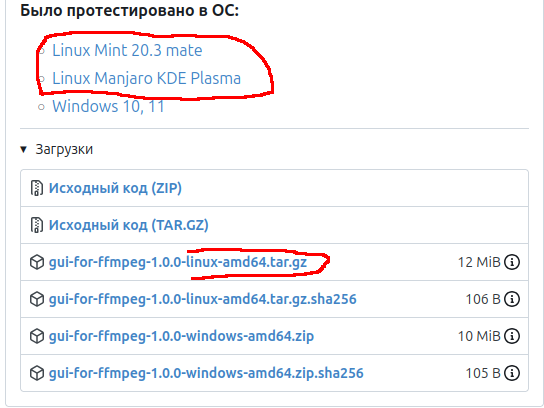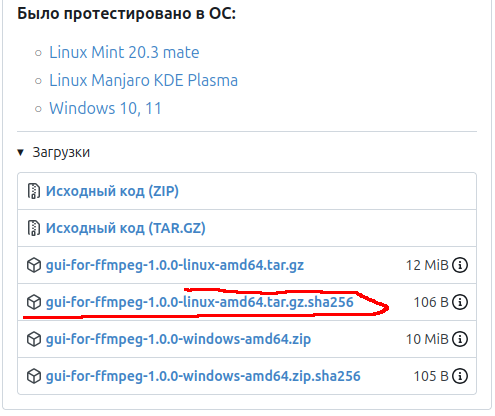Installing GNU/Linux
- First, download the archive with the program. The latest version of the program can be downloaded here. We are looking for Linux or something like that name. linux-amd64.tar.gz. At the moment, there is only one binary for all GNU/Linux distributions. It should work in most cases.

- Not an obligatory step. If you want to make sure that there was no substitution during the download and the archive was downloaded completely, then after downloading you can check the SHA-256 checksum. Enter the command in the terminal:
sha256sum ~/Download/gui-for-ffmpeg-{version}-linux-amd64.tar.gzWhere {version} is the version of the downloaded program.
We get a set of numbers and letters.
They will have to match the file ...linux-amd64.tar.gz.sha256, which can be downloaded in the same place where the program itself was downloaded.
The .sha256 file can be opened via notepad or any text editing program. The hash must match the one produced by the sha256sum utility. If everything matches, then there was no substitution during the download. And the entire archive was downloaded.
- Unpack the archive.
- In the program folder, run one of the commands.
- The program can be launched from Menu in the Sound & Video or Accessories section.
You can also call the program via the terminal:
gui-for-ffmpeg


